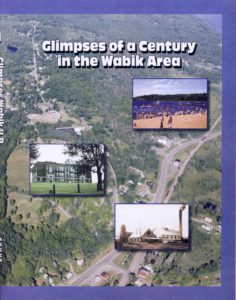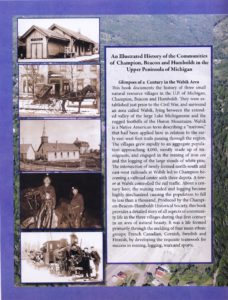Book
On November 9, 2019, the Champion-Beacon-Humboldt Historical Society proudly held the release of its book:
“GLIMPSES OF A CENTURY IN THE WABIK AREA”
AN ILLUSTRATED HISTORY OF THE COMMUNITIES OF CHAMPION, BEACON AND HUMBOLDT.
The hard cover book, with over 800 pages and 1000 photos, documents all aspects of life in the communities—from their establishment just before the Civil War until the closing of the schools over a century later. It is printed as a two volume set and priced at $50. For an additional $10 CBHHS will mail books to any U.S. address. Send $60 (check or money order) along with a clear and complete address for each two volume set ordered to the Society at:
CBHHS, P.O. Box 2, Champion, MI 49814
Questions about the book and CBHHS can be directed by phone to 906-458-0624.
This book documents the history of three small natural resource villages in the U.P. of Michigan, Champion, Beacon and Humboldt. They were established just prior to the Civil War, and surround an area called Wabik, lying between the extended valley of the large Lake Michigamme and the rugged foothills of the Huron Mountains. Wabik is a Native American term describing a “narrows,” that been applied here in relation to the early east-west foot trails passing through the region. The villages grew rapidly to an aggregate population approaching 4,000, mostly made up of immigrants, and engaged in the mining of iron ore and the logging of the large stands of white pine. The intersection of newly formed north-south and east-west railroads at Wabik led to Champion becoming a railroad center with three depots. A tower at Wabik controlled the rail traffic. About a century later, the mining ended and logging became highly mechanized causing the population to fall to less than a thousand. Produced by the Champion-Beacon-Humboldt Historical Society, this book provides a detailed story of all aspects of community life in the three villages during that first century in an area of natural beauty. It was a life formed primarily through the melding of four main ethnic groups: French Canadian, Cornish, Swedish and Finnish, by developing the requisite teamwork for success in mining, logging, wars and sports.

